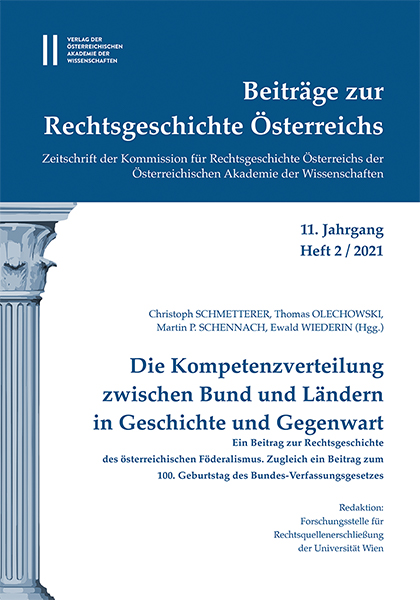
Beiträge zur Rechtsgeschichte Österreichs 11. Jahrgang Heft 2/2021, pp. 344-357, 2021/12/16
Die Kompetenzverteilung zwischen Bund und Ländern in Geschichte und Gegenwart
Ein Beitrag zur Rechtsgeschichte des österreichischen Föderalismus. Zugleich ein Beitrag zum 100. Geburtstag
des Bundes‐Verfassungsgesetzes
The Austrian Constitutional Court has dealt extensively with the fragmented allocation of competences, which it considers a key element of federalism and thus of one of the leading constitutional principles. Over the past century, the Constitutional Court has developed several methods and strategies – rather than theories – in order to determine the exact meaning of the allocated competences. Among these different, sometimes contested approaches, an originalist method prevails. While the case law is neither particularly centralistic nor favourable towards federalism, the Constitutional Court nevertheless has contributed a great deal to the understanding of the competences in the Austrian federal system.
Keywords: distribution of competences – Constitutional Court – federalism – interpretation of competences – interpretive methods